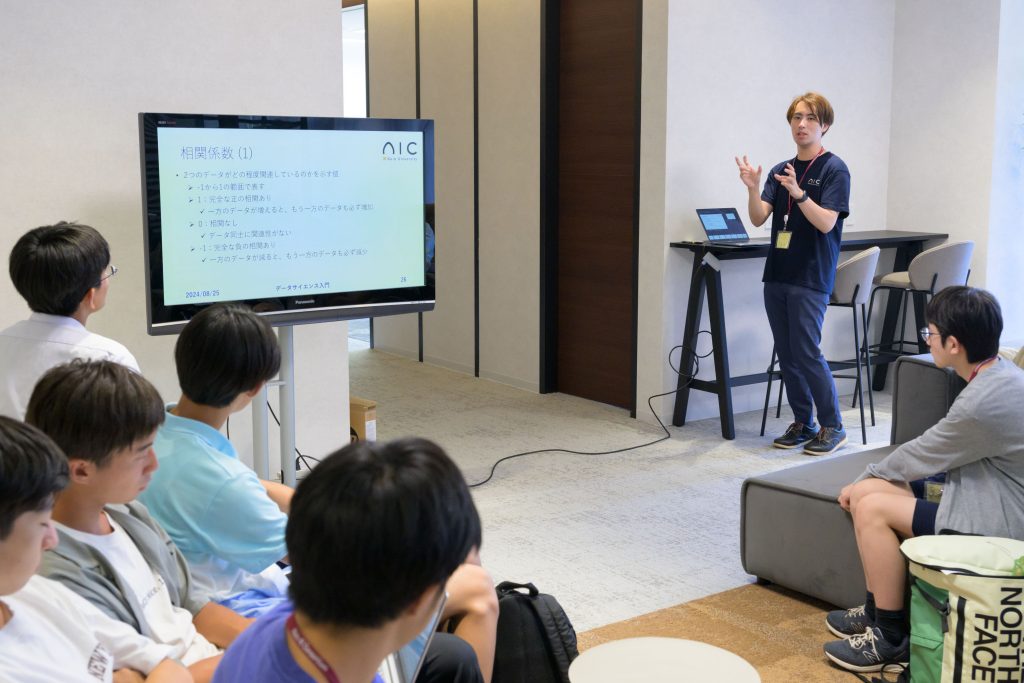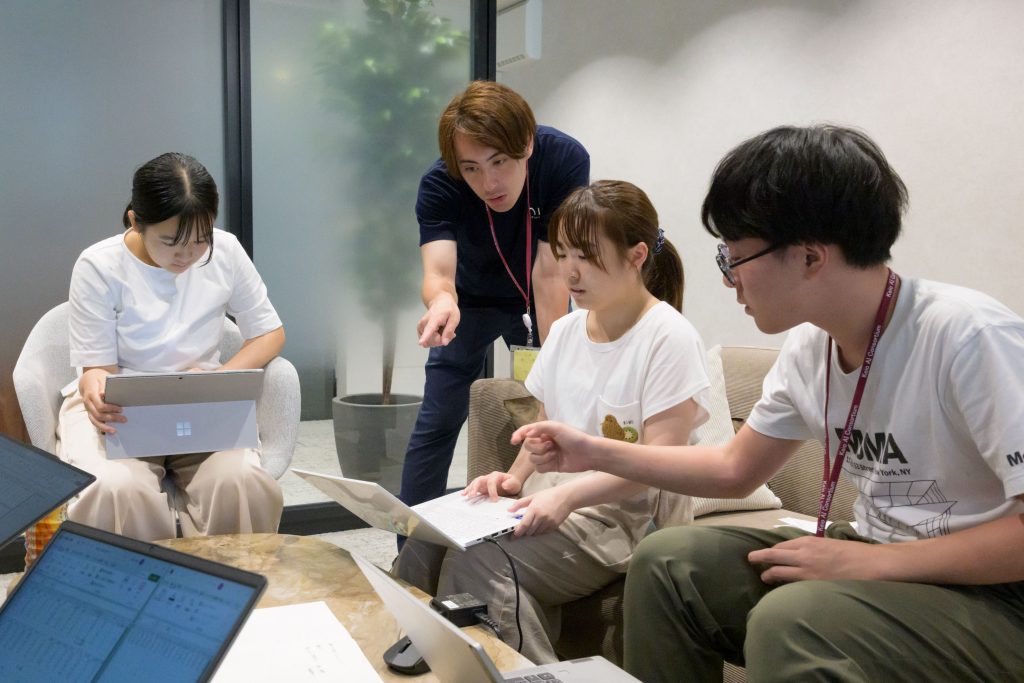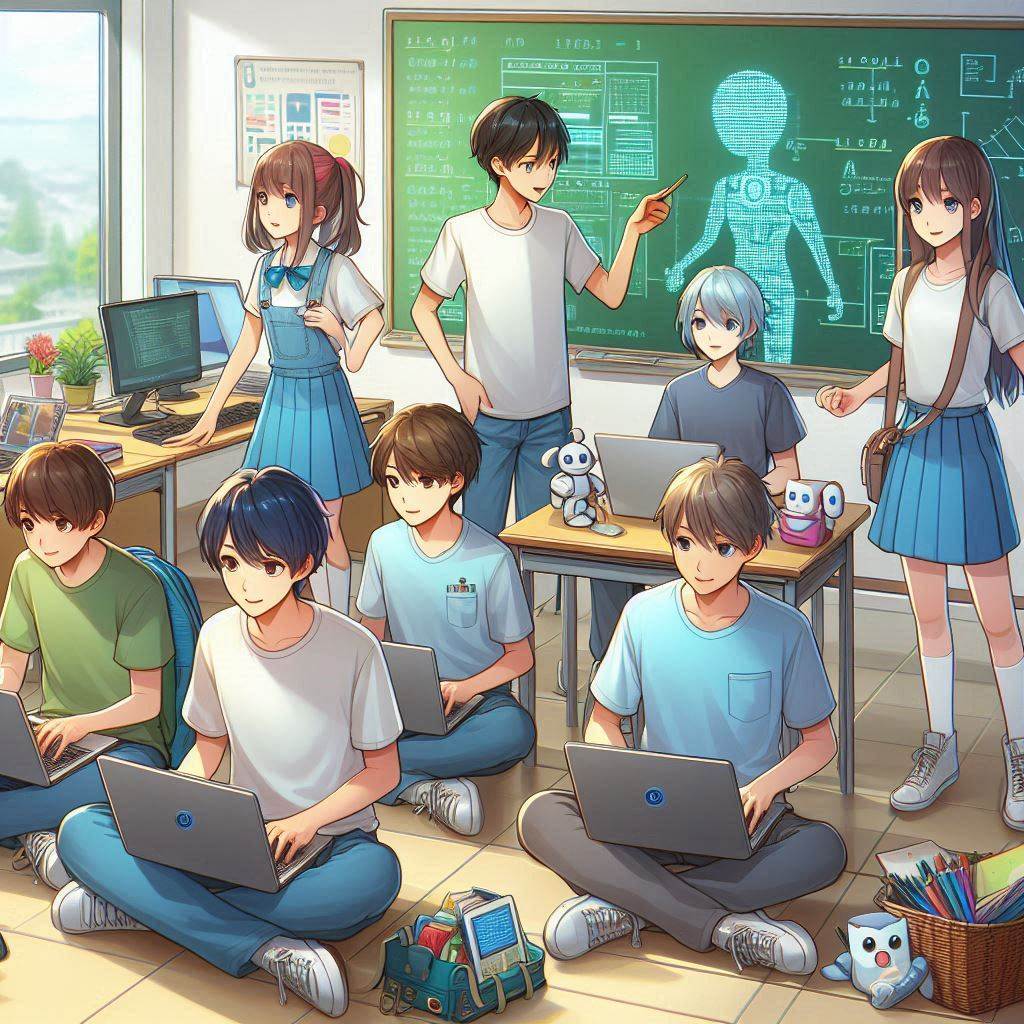
Report
Event
AIC Days 2024: Event for Junior High and High School Students at Keio University’s Affiliated Schools
2024.09.02 written by AIC広報チーム
Over the weekend of August 24–25, the AI and Advanced Programming Consortium (AIC) held a special event at Hiyoshi Campus’s AIC lounge within the Kyosei-kan Collaboration Complex called “AIC Days.” The event was aimed at teaching junior high and high school students from Keio’s affiliated schools about artificial intelligence and programming.
August 24, 2024
The program for the first day offered an intensive workshop on programming with Google Apps Script (GAS).
Introduction to GAS: Starting from Basics
Forty-six students joined the AIC Days’ GAS introductory workshop, the first program of the event.
The students began by learning about how to set up GAS and then moved on to Java Script.
By working through numerical calculations that relied on programming, students were able to get hands-on experience in how to create programs that serve practical purposes. While working on the exercises, students were allowed to discuss any issues they came across in groups or ask the Keio undergraduate students serving as teaching assistants for help so that they could better grasp the concepts at hand.
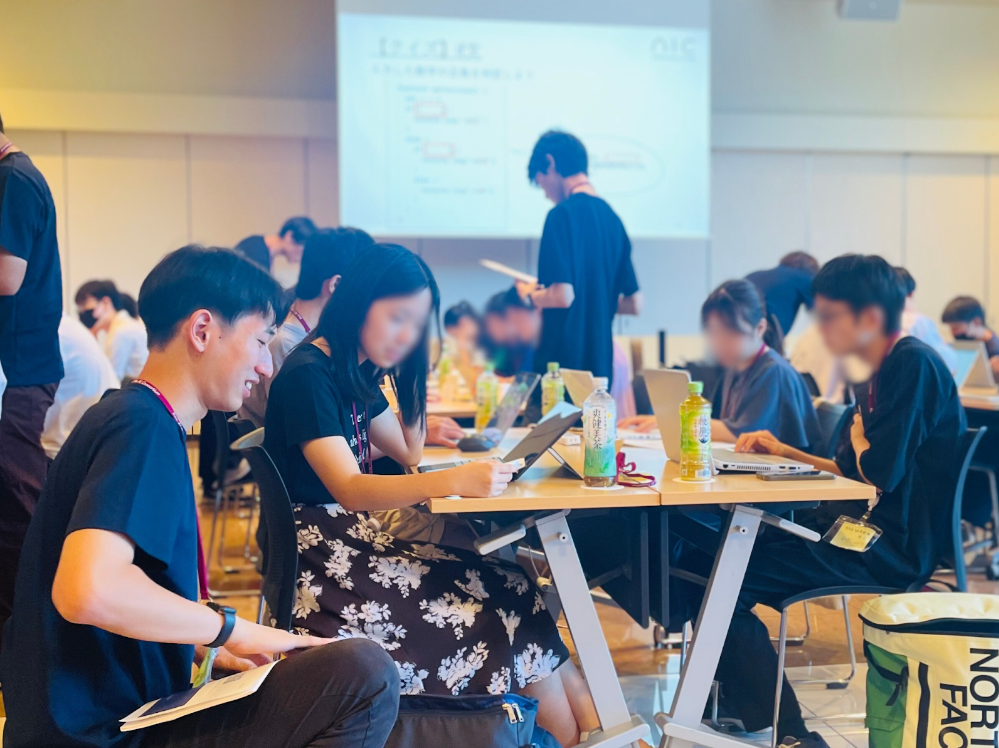
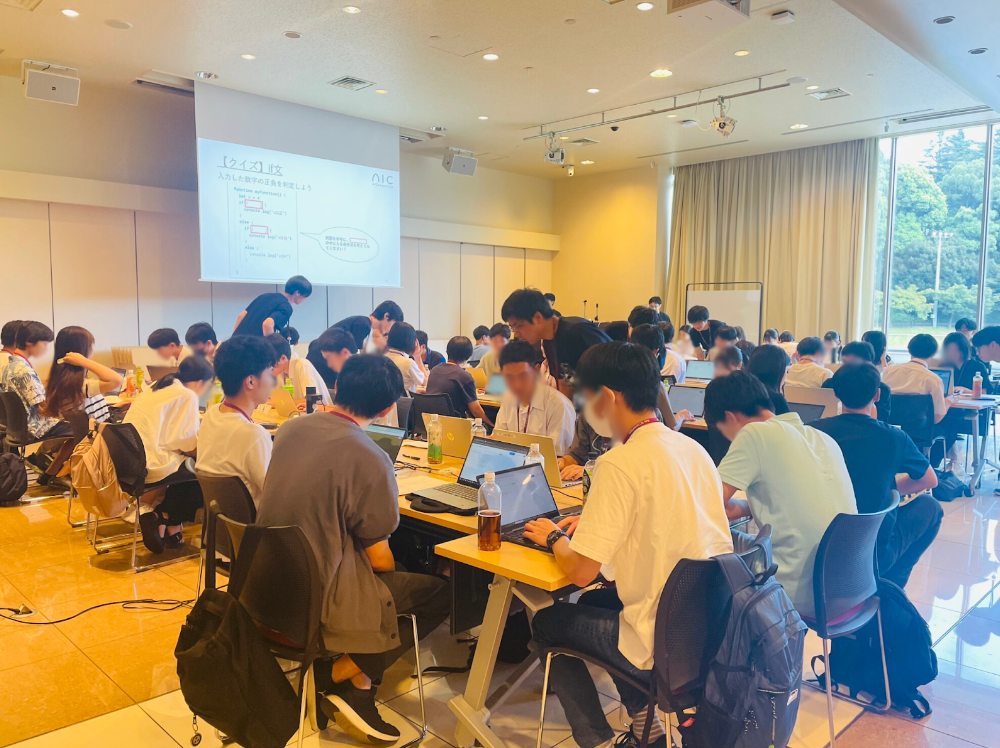
Students were also given the time to ask the instructors and TAs about options after graduating from high school and what life was like as a college student while eating lunch together.
The shaved ice for dessert was an especially popular summer treat, with students lining up out the door for a taste.
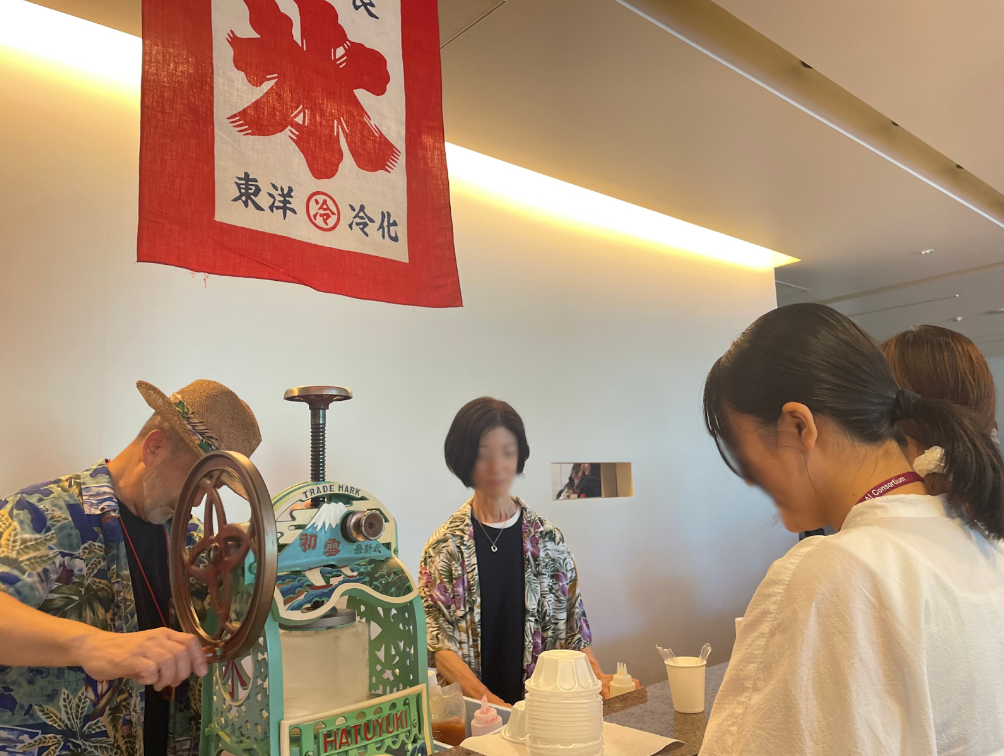
Intermediate GAS Programming: Practice! Developing a Web App
As the lunch break drew to a close, students joined the next session: Intermediate GAS Programming. Some students decided to join on the spot, having had so much fun in the beginner class that they wanted to see what would be taught next. A total of thirty-seven students joined the workshop.
For this session, students used what they had learned in the morning in order to try their hand at designing an online application. After going over the basics of web app design, students challenged themselves to develop their own unique apps, some utilizing spreadsheets, ChatGPT, and even a household accounting app.
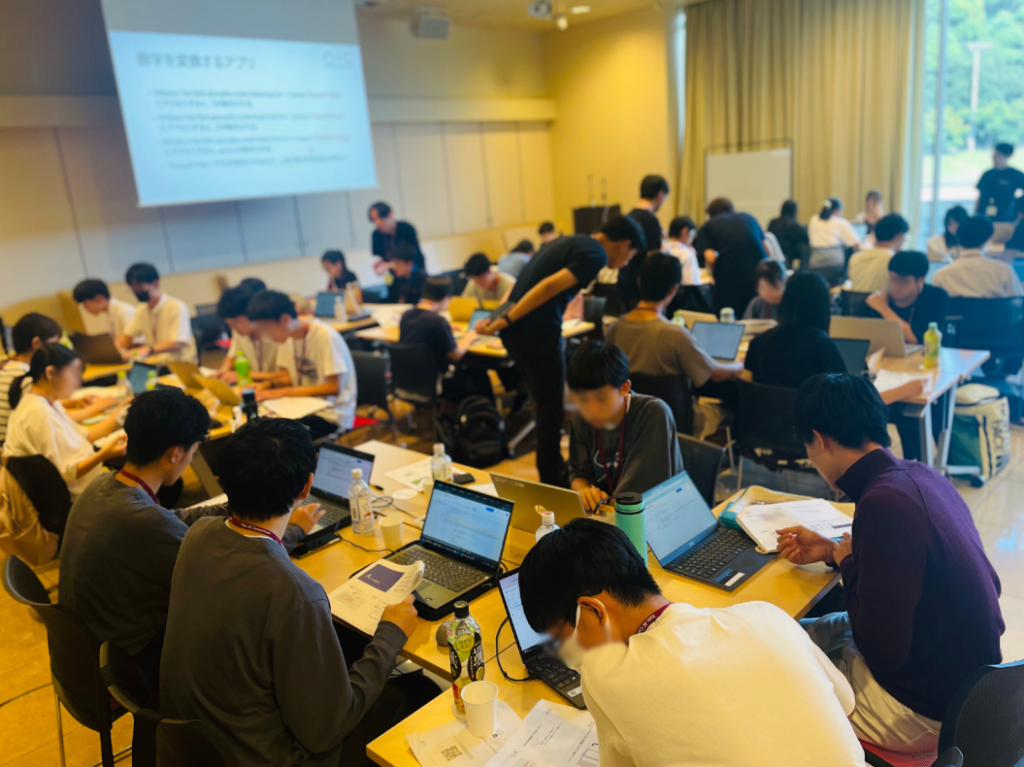
Advanced GAS Programming: The LINE Bot Challenge
Twenty-one students went on to participate in the Advanced GAS Programming workshop.
By taking what they had learned in the intermediate course, students worked at linking programs on GAS to LINE chatbots.
While the LINE Bots behaved in ways that students hadn’t expected, they persevered and made steady progress, fixing issues as they arose. At the end of the course, time was given for students to attempt to write their own original program that incorporated elements of what they had learned throughout the day, with many students so enthusiastic that they stayed until the very last minute.
August 25, 2024
The second day of the event had students participating in “Introduction to Quantum Computers,” “Introduction to LEGO Robotics with Python,” and “Introduction to Data Science.”
Introduction to Quantum Computers
On the morning of the second day, thirty-seven junior high and high school students participated in the “Introduction to Quantum Computers” workshop. The class was led by a graduate student who is currently studying at Keio University. The instructor explained to students how quantum computers work and the basics of quantum mechanics.
According to one participating student from Keio Girls Senior High School, she learned about the workshop at her school and decided to attend as a part of her tour of the Faculty of Science and Technology. “I had studied quantum mechanics on my own, but thanks to this workshop, I feel like I have a better grasp of the subject. Participating in the ‘AIC Days’ workshops has made me really interested in the Faculty of Science and Technology. I’m looking forward to attending more workshops in the future, especially since they talk about cutting-edge technologies in ways that are easy to understand and break down subjects that you can normally only study at the university level.”
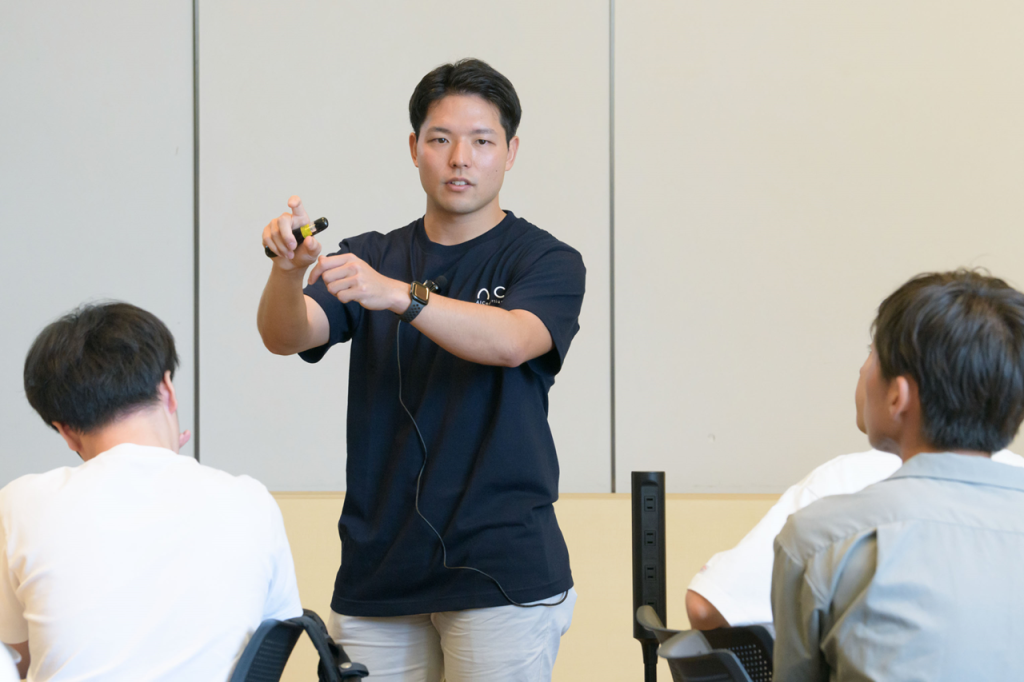
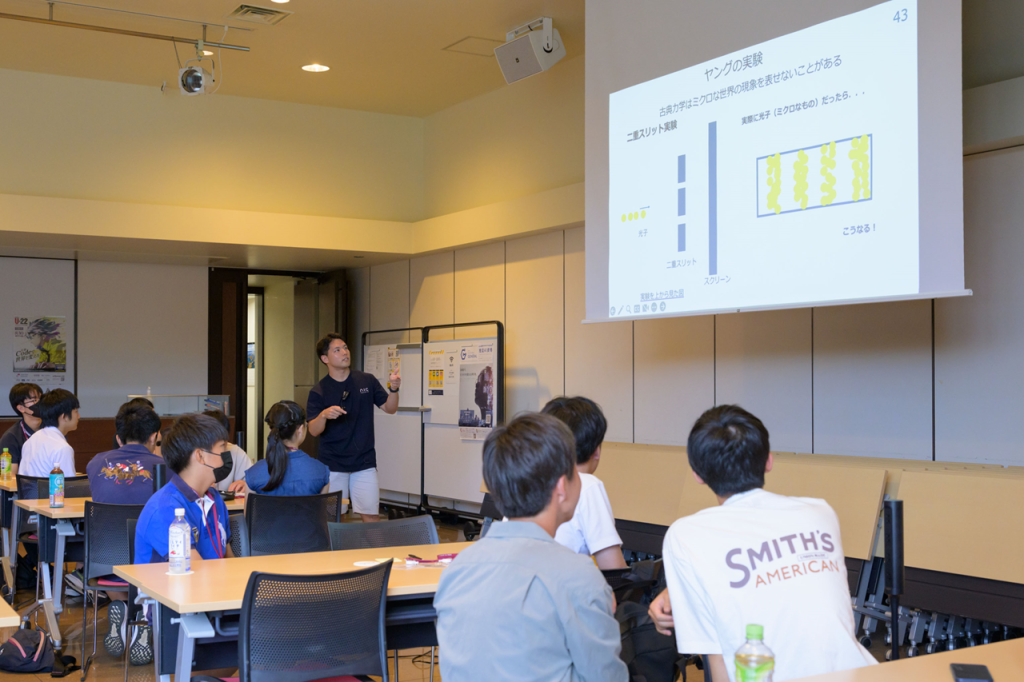
Introduction to LEGO Robotics with Python
“Introduction to LEGO Robotics with Python” was held in the afternoon of the second day. Eleven students joined the workshop, all of whom showed great interest in learning about robots and data science. This workshop was a hands-on course designed for students to make their own basic robots and control them using Python coding. The “LEGO Education Spike,” an educational kit, was used to teach the basic principles of robotics. During the first half of the session, students followed instruction pamphlets to assemble their robots from LEGOs. Afterwards, they learned how to use distance sensors, color sensors, and motors with Python, allowing them to understand the basics of how to make the robots actually move.
For the latter half of the workshop, students were given a special “mission” that they had to program their robots to complete. The mission was a disaster relief scenario in which the robots had to follow a predetermined route that was marked with a line, navigate around obstacles, retrieve blocks that represented emergency provisions, and successfully deliver them to their intended destination. Students worked in teams to discuss how to finish the course as fast as possible, the shortest route to avoid obstacles, and other ideas. They programmed as they went, making the robots move according to their plans in a long process of trial and error. At the very end of the workshop, students did a series of speedrun challenges. Whenever a team’s robot cleared a given goal, the room would erupt in cheers. One second-year high school student who agreed to be interviewed said, “it was so fun to be able to take something familiar like LEGO and use Python to make them move around like we wanted.”
Having students at the affiliated schools learn about how programs can manipulate physical objects is an incredible opportunity, and an invaluable lesson for them to discover different facets of computer programming. AIC is committed to enhancing and expanding these opportunities so that they reach more students from these schools.
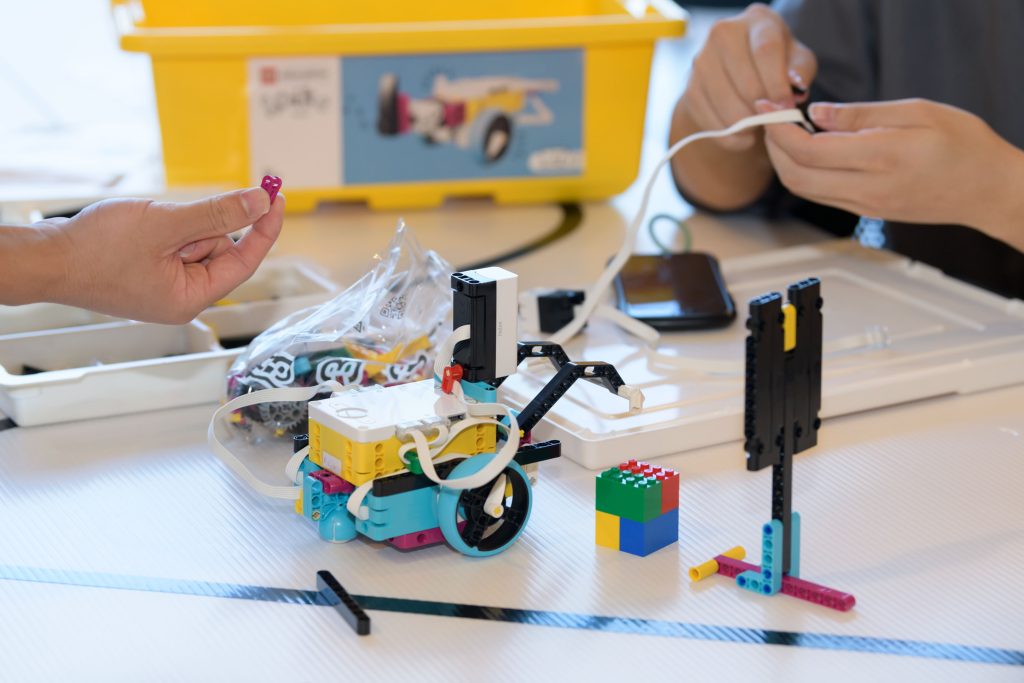
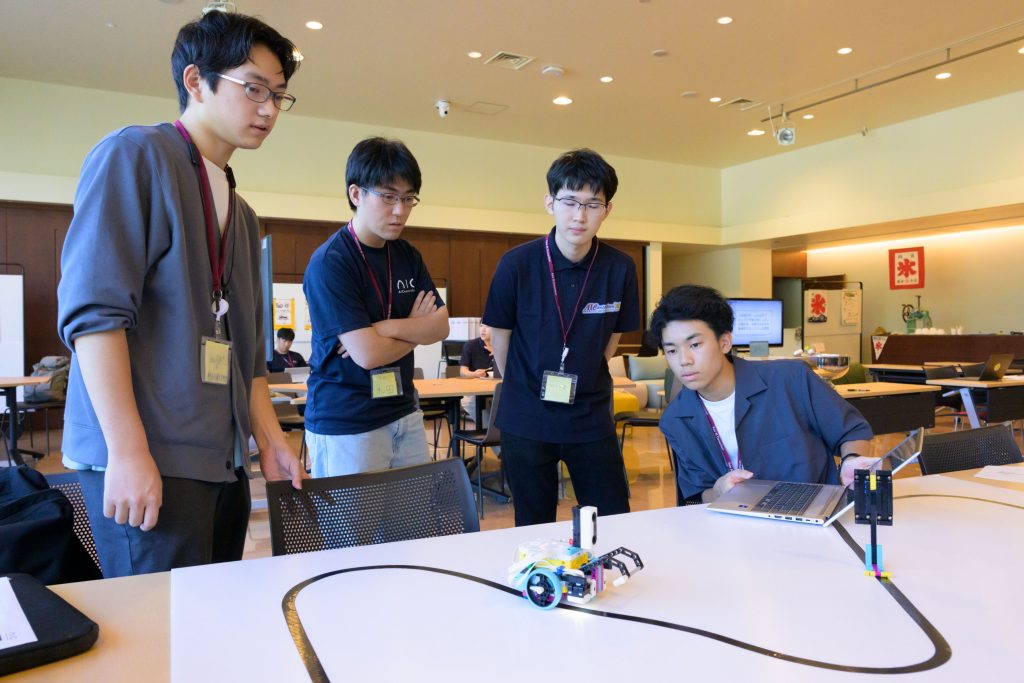
Introduction to Data Science
Twenty-three students participated in the afternoon “Introduction to Data Science” workshop. Data science is a system of study that uses data analysis to support decision making. For this workshop, students used data from the 2023 Nippon Professional Baseball season as a way of analyzing a topic from different angles, looking at various teams’ strengths and the factors that contributed to their wins and losses such as “defense” or “batting.”
At the beginning of the workshop, the instructor gave a brief overview of data science and how to use Excel and PowerPoint. After this, students broke up into teams in order to formulate their own hypotheses and work on their analyses. College students served as teaching assistants throughout the class, going around to the different teams and giving them advice about how to approach their analyses and obtain results. At the end of the workshop, each team compiled their findings into a PowerPoint presentation and voted for which team they thought was the best.
For many students, this was the first time they had carried out data analysis. One student said, “it was fascinating to be able to look at the same set of numbers from so many different angles,” while another commented, “I’m not that great at math, but approaching things using statistics and informatics was really interesting!”
